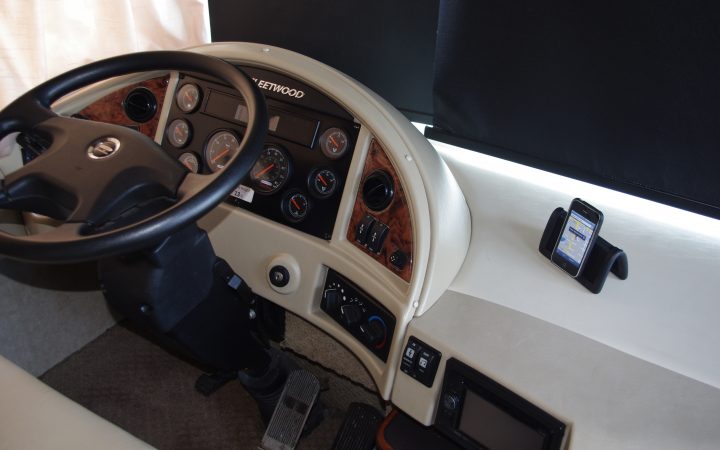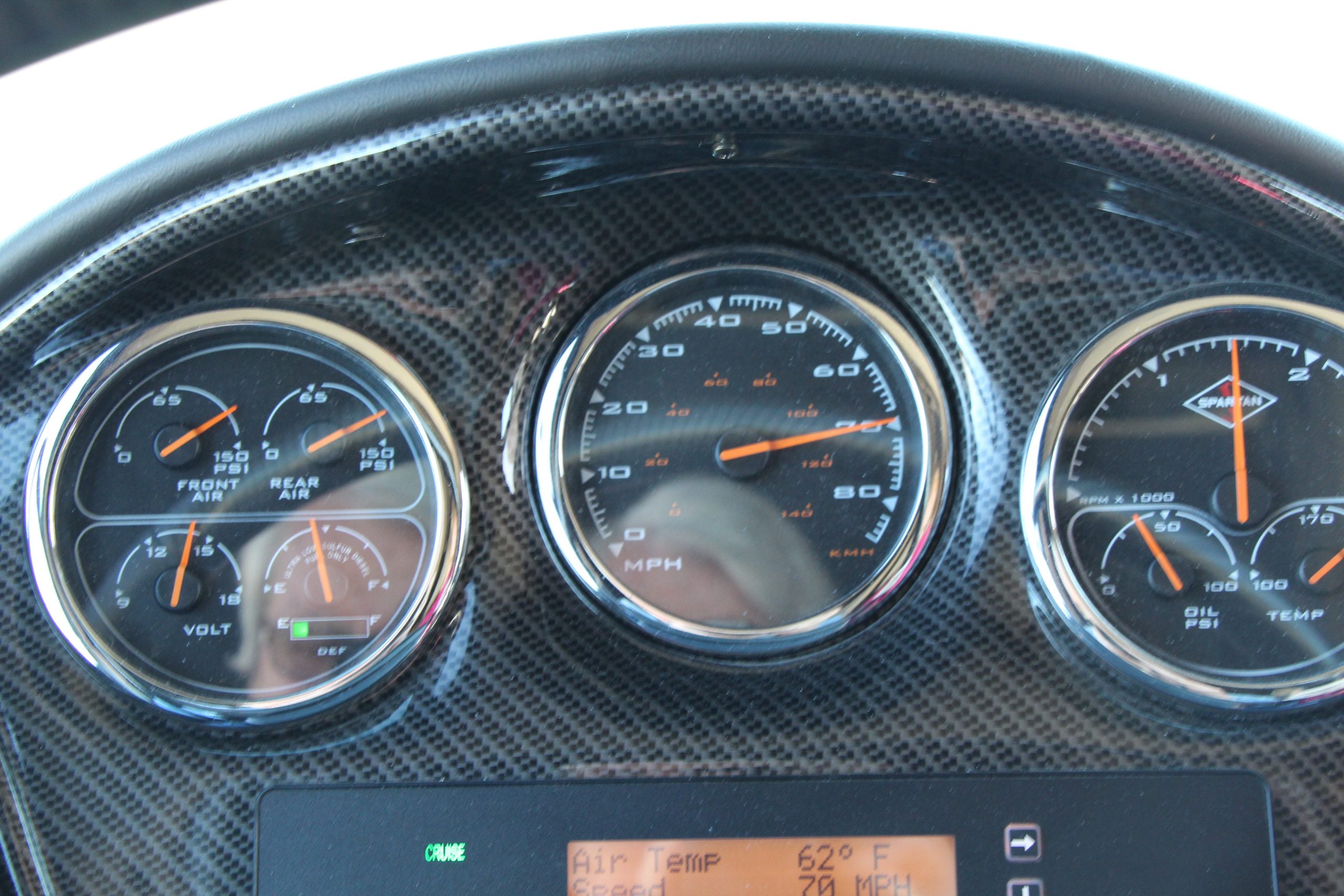Digital instrument readouts, in lieu of analogue gauges, have been a trend in the auto industry for some vehicles for years. Motorhomes, however, are pretty well still in the analog stages for general engine- and speed-related data. The exception for this would be the SilverLeaf Glass Dash, which was available as aftermarket equipment. But is digital superior to the tried-and-true analogue readout?
In theory, it would appear to be. However, it may have two weak points when both systems are compared. The first being a noticeable electronic buffer lag in the digital readout. To avoid numbers jumping in rapid concession and making it impossible to read, a built in delay module slows the sample rate down. This contributes to unreliability of the information during a rapid ramp up or ramp down readout event. In fact, in some cases, it may jump so quickly that it can be difficult to determine whether the rapidly changing data is increasing or decreasing. Most of the time, this digital blur is not critical to the driver. However, there may be some driving situations or maneuvers when up-to-date, real time readings are crucial. On the other side of the coin, the analogue, which also uses a form of buffering, can be viewed sweeping up or down displaying a smooth, albeit a rapid, change.
Operator Reaction
The other shortfall with the sole digital display is the time it takes for the operator to determine that there may be a problem. When a digital number only readout is scanned by the driver, they must read the number and assess its value as compared to what it should be. Whereas, with the analogue gauges, the driver only has to scan each instrument for normal needle position or angle. This is substantially quicker.
substantially quicker.
The speed difference may not seem that important, as we are only talking about the difference of perhaps a second or fraction thereof. However, in some modern diesel pushers, you may have a speedometer, tachometer, air pressure (rear), air pressure (front), engine temperature, transmission temperature, turbo boost, oil pressure and more. Most of these gauges are scanned regularly while driving. In some critical maneuvers, like climbing or descending steep mountain grades, the monitoring of this data becomes more frequent and important. If any readings were to start to change, indicating a problem, the operator must be able to quickly identify the issue to take corrective action.
So, while the digital readouts are nice to have, I believe that the analogue gauges are still needed. It is no surprise, and great to see, that many autos today are equipped with both types of displays.





